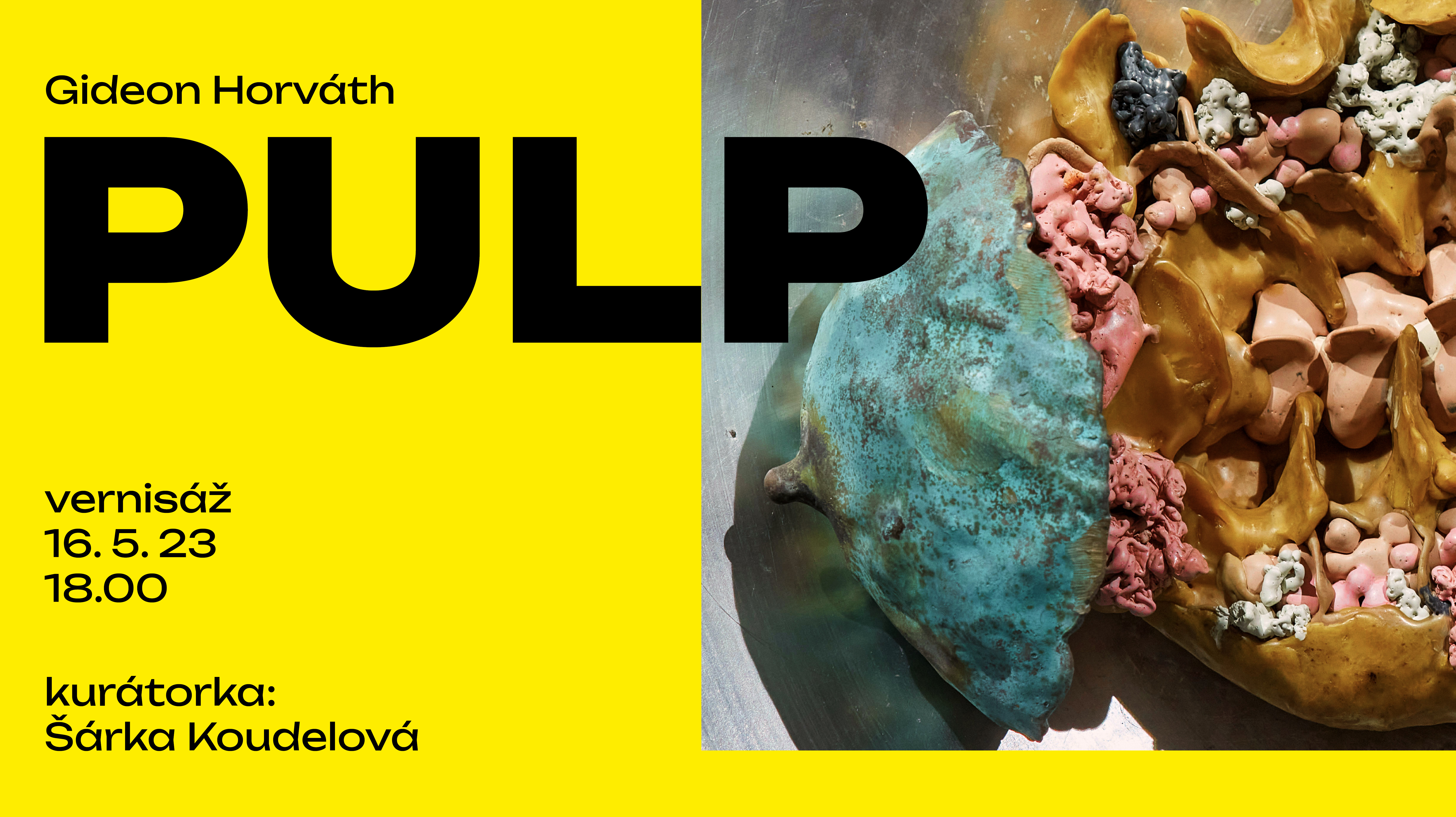-
30. 05. 2023Rezident
Gideon Horváth: Pulp

The first artist-in-residence at PRÁM of 2023 is the Hungarian visual artist Gideon Horváth. We invite you to the opening of his exhibition Pulp on Tuesday 05/16 at 6:00 p.m. There will be a guided tour wtih the author Gideon Horváth within the exhibition opening. The curator of the exhibition is Šárka Koudelová.
exhibition opening: 05/16 at 6:00 p.m.
exhibition: 05/16 – 05/30/2023
One of Gideon Horváth’s first significant sensory experiences is a childhood memory of secretly plucking a small apricot from a young tree in the courtyard of a country house. The hot pulp melted on his tongue while the warm grass found its way between his toes. This combination of touch, taste, and sight is an almost cinematic moment to which Gideon still returns today.
When Eve and Adam tasted the forbidden fruit, it was probably warm from the Sun and at the peak of its ripeness. Usually, falling under the influence of the local imagination, we picture an apple, or perhaps a pomegranate, with its glossy, smooth skin, which releases upon breaking a barrage of red grains with a bittersweet aroma. In reality, however, contemporary sources diverge in their interpretation of the Old Testament fruit – historians, scientists, and rabbis speculate that it might well have been a mango, a fig, a grapefruit, a quince, or perhaps a fruit that no longer exists. Gideon takes a similarly imaginative approach to depicting fruits – the “fruitiness” of his objects is undeniable in their overripeness, meatiness, and number of pips, and if no one were to ask us the rational question concerning the type of fruit depicted, we probably wouldn’t even think twice of it during our time spent at the exhibition.
There are plenty of metaphors of fruit and parts of the human body in art. Gideon complements this visual, erotic, and functional interspecies similarity with another layer of meaning – one made of beeswax. Just as overripe fruit turns inside out, beeswax, too, is created in the innards of insects. It can be soft, pliable, and liquid, but also hard as a rock. It seems ephemeral, yet it can survive centuries under standard conditions. It can predict the future and is indispensable for finding the form of bronze monuments. In its essence, then, it is a subversive substance that escapes normative social projections. The natural material, which Gideon uses so often that he no longer smells its intoxicating, festive aroma, is to him a natural material allegory of the queer perspective – an integral component of his life. Baring one’s interior, suppressing emotions, thematising long suppressed life stories, and facing the vulnerability of corporeality head on – these are the circumstances of an existence that is the opposite of “straight”, and, just like the floor in one of the gallery rooms, represents a still unsuitable slippery slope that has not been fully accepted yet.
Was the paradise we lost that ideal society full of respect and universal love that we so desire? Or is the forbidden fruit – euphemistically speaking – a metaphor for the epitome of life, a struggle that transforms a ripe apricot into a multisensory experience? What would happen to the fruits of the Tree of Knowledge if Eve and Adam had not partaken from it? The relational composition of Gideon’s objects evokes the context of a Roman feast to which we have arrived late – all bodily forms blend together. Centaur, human, meat, pulp, marrow. “Overripe fruit is on the tree and nobody comes to pick it.”
The exhibition is supported by State Fund of Culture of the Czech Republic, the City of Prague and Visegrad fund.